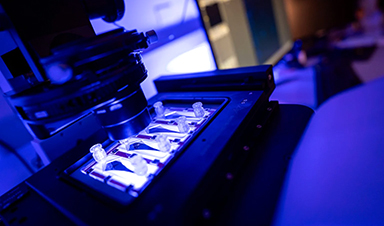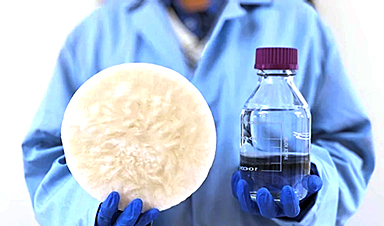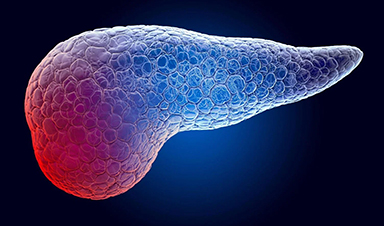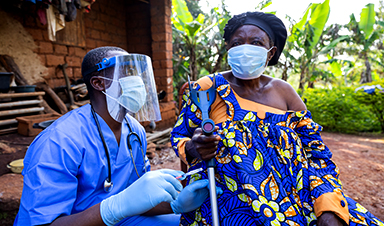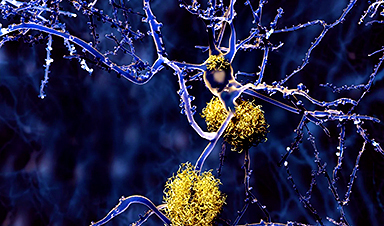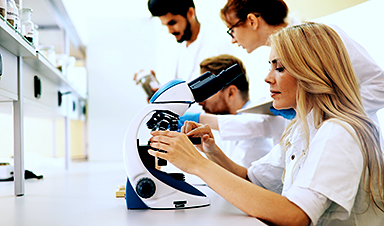More efficient and longer lasting glucose-responsive insulin that eliminates the need for people with type 1 diabetes to measure their glucose levels could be a step closer thanks to a Monash University-led project.
The researchers from Monash University, RMIT University, The University of Melbourne and the Baker Institute developed the system to respond to glucose, which current insulin does not.
Co-first author Dr. Rong Xu, from the Monash University Central Clinical School’s Australian Center for Blood Diseases, and Dr. Sukhvir Kaur Bhangu from RMIT University and the University of Melbourne said if it worked in humans, only two injections would be needed per day.
Current insulin therapy requires people to monitor their blood sugar throughout the day and take multiple, carefully calculated doses based on food intake, exercise, stress, illness and other factors.
Some must inject themselves up to five times a day. Continuous glucose monitoring devices remove, or at least reduce, the need for finger pricks, and insulin pumps can automatically deliver insulin, but they are very expensive and still are not always able to calculate the correct amount of insulin to be given.
The multidisciplinary team developed a new “artificial pancreas system” using phytoglycogen nanoparticles, which are chains on glucose molecules dubbed a “nanosugar platform” as they are made of glucose, to deliver and release insulin in response to glucose levels in the blood.
This engineered nanosugar platform enabled rapid and sustained glucose-responsive insulin delivery, which was longer lasting and smarter than other systems.
Dr. Xu said it required only one injection every 12 hours and self-regulated. “This system would mean fewer injections and, potentially, no need to measure glucose,” Dr. Xu said.
The research emerged from an NHMRC Ideas Grant awarded to co-lead author and Head of Monash University’s Australian Center for Blood Diseases NanoBiotechnology Laboratory, Professor Christoph Hagemeyer, co-lead author and RMIT Associate Professor Francesca Cavalieri, and co-author Professor Frank Caruso at the University of Melbourne to develop this revolutionary type of insulin.
Professor Hagemeyer said more research was needed but the results were promising. He said the nanosugar platform was biodegradable, which enabled rapid and extended glucose control in two different models of type 1 diabetes with a single injection.
“The nanosugar particles are engineered to control insulin release and absorption through the lymphatic system into the blood,” he said.
Professor Cavalieri said the research team, which includes several clinicians, now hoped to secure funding to continue the project and eventually undertake clinical trials. “This new method is not only efficient, it’s biodegradable and uses natural methods, which significantly reduces the chances of adverse affects or immune reactions,” she said.
News
Tumor “Stickiness” – Scientists Develop Potential New Way To Predict Cancer’s Spread
UC San Diego researchers have developed a device that predicts breast cancer aggressiveness by measuring tumor cell adhesion. Weakly adherent cells indicate a higher risk of metastasis, especially in early-stage DCIS. This innovation could [...]
Scientists Just Watched Atoms Move for the First Time Using AI
Scientists have developed a groundbreaking AI-driven technique that reveals the hidden movements of nanoparticles, essential in materials science, pharmaceuticals, and electronics. By integrating artificial intelligence with electron microscopy, researchers can now visualize atomic-level changes that were [...]
Scientists Sound Alarm: “Safe” Antibiotic Has Led to an Almost Untreatable Superbug
A recent study reveals that an antibiotic used for liver disease patients may increase their risk of contracting a dangerous superbug. An international team of researchers has discovered that rifaximin, a commonly prescribed antibiotic [...]
Scientists Discover Natural Compound That Stops Cancer Progression
A discovery led by OHSU was made possible by years of study conducted by University of Portland undergraduates. Scientists have discovered a natural compound that can halt a key process involved in the progression [...]
Scientists Just Discovered an RNA That Repairs DNA Damage – And It’s a Game-Changer
Our DNA is constantly under threat — from cell division errors to external factors like sunlight and smoking. Fortunately, cells have intricate repair mechanisms to counteract this damage. Scientists have uncovered a surprising role played by [...]
What Scientists Just Discovered About COVID-19’s Hidden Death Toll
COVID-19 didn’t just claim lives directly—it reshaped mortality patterns worldwide. A major international study found that life expectancy plummeted across most of the 24 analyzed countries, with additional deaths from cardiovascular disease, substance abuse, and mental [...]
Self-Propelled Nanoparticles Improve Immunotherapy for Non-Invasive Bladder Cancer
A study led by Pohang University of Science and Technology (POSTECH) and the Institute for Bioengineering of Catalonia (IBEC) in South Korea details the creation of urea-powered nanomotors that enhance immunotherapy for bladder cancer. The nanomotors [...]
Scientists Develop New System That Produces Drinking Water From Thin Air
UT Austin researchers have developed a biodegradable, biomass-based hydrogel that efficiently extracts drinkable water from the air, offering a scalable, sustainable solution for water access in off-grid communities, emergency relief, and agriculture. Discarded food [...]
AI Unveils Hidden Nanoparticles – A Breakthrough in Early Disease Detection
Deep Nanometry (DNM) is an innovative technique combining high-speed optical detection with AI-driven noise reduction, allowing researchers to find rare nanoparticles like extracellular vesicles (EVs). Since EVs play a role in disease detection, DNM [...]
Inhalable nanoparticles could help treat chronic lung disease
Nanoparticles designed to release antibiotics deep inside the lungs reduced inflammation and improved lung function in mice with symptoms of chronic obstructive pulmonary disease By Grace Wade Delivering medication to the lungs with inhalable nanoparticles [...]
New MRI Study Uncovers Hidden Lung Abnormalities in Children With Long COVID
Long COVID is more than just lingering symptoms—it may have a hidden biological basis that standard medical tests fail to detect. A groundbreaking study using advanced MRI technology has uncovered significant lung abnormalities in [...]
AI Struggles with Abstract Thought: Study Reveals GPT-4’s Limits
While GPT-4 performs well in structured reasoning tasks, a new study shows that its ability to adapt to variations is weak—suggesting AI still lacks true abstract understanding and flexibility in decision-making. Artificial Intelligence (AI), [...]
Turning Off Nerve Signals: Scientists Develop Promising New Pancreatic Cancer Treatment
Pancreatic cancer reprograms nerve cells to fuel its growth, but blocking these connections can shrink tumors and boost treatment effectiveness. Pancreatic cancer is closely linked to the nervous system, according to researchers from the [...]
New human antibody shows promise for Ebola virus treatment
New research led by scientists at La Jolla Institute for Immunology (LJI) reveals the workings of a human antibody called mAb 3A6, which may prove to be an important component for Ebola virus therapeutics. [...]
Early Alzheimer’s Detection Test – Years Before Symptoms Appear
A new biomarker test can detect early-stage tau protein clumping up to a decade before it appears on brain scans, improving early Alzheimer’s diagnosis. Unlike amyloid-beta, tau neurofibrillary tangles are directly linked to cognitive decline. Years [...]
New mpox variant can spread rapidly across borders
International researchers, including from DTU National Food Institute, warn that the ongoing mpox outbreak in the Democratic Republic of the Congo (DRC) has the potential to spread across borders more rapidly. The mpox virus [...]

